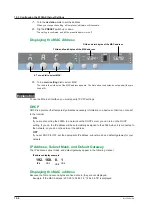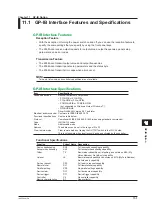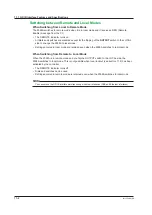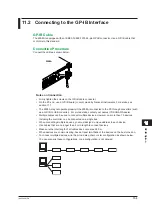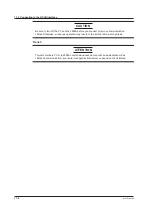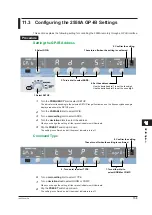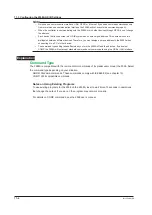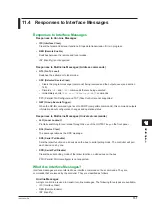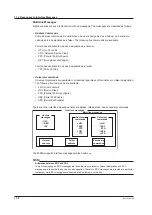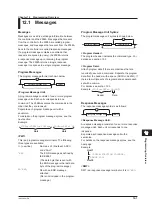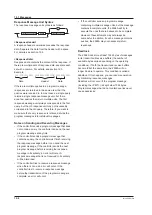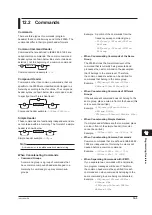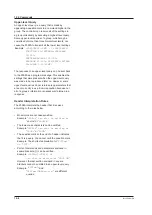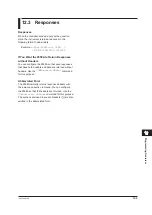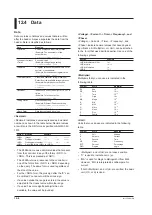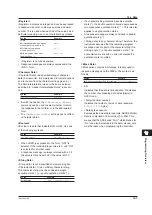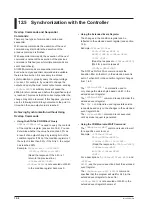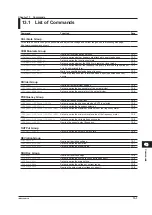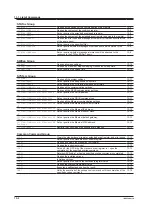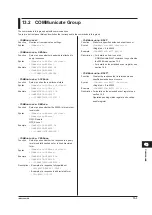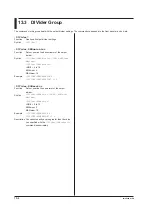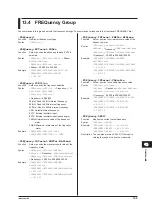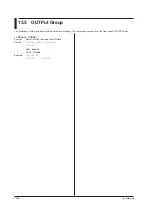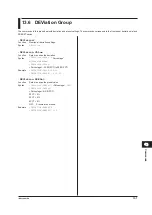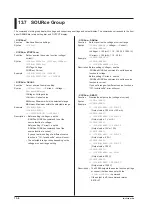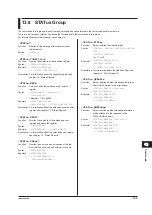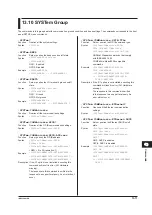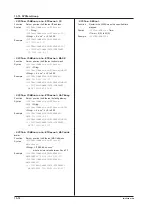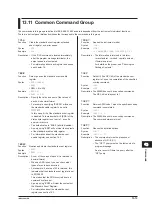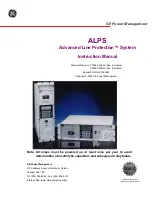
12-6
IM 2558A-01EN
12.4 Data
<Voltage>, <Current>, <Time>, <Frequency>, and
<Phase>
<Voltage>, <Current>, <Time>, <Frequency>, and
<Phase> indicate decimal values that have physical
significance. A <Multiplier> or <Unit> can be attached
to the form that was described earlier. Use one of the
following syntaxes.
Syntax Example
<NRf><Multiplier><Unit>
5MV
<NRf><Unit>
5E-3V
<NRf><Multiplier>
5M
<NRf>
5E-3
<Multiplier>
Multipliers that you can use are indicated in the
following table.
Symbol Word
Multiplier
EX Exa
10
18
PE Peta
10
15
T Tera
10
12
G Giga
10
9
MA Mega
10
6
K Kilo
10
3
M Milli
10
−3
U Micro
10
−6
N Nano
10
−9
P Pico
10
−12
F Femto
10
−15
<Unit>
Units that you can use are indicated in the following
table.
Symbol Word
Meaning
V Volt
Voltage
A Ampere
Current
S Second
Time
HZ Hertz
Frequency
PCT Percent
Percentage
DEG Degree
Angle
• <Multiplier> and <Unit> are not case sensitive.
• “U” is used to indicate micro (µ).
• “MA” is used for Mega to distinguish it from Milli.
However, “MA” is interpreted as milliampere for
current.
• If both <Multiplier> and <Unit> are omitted, the basic
unit (V, A, or S) is used.
Data
Data contains conditions and values that are written
after the header. A space separates the data from the
header. Data is classified as follows:
Data Meaning
<Decimal>
A value expressed in decimal notation
(Example: The denominator of the
output divider
->:DIVider:DENominator 4
<Voltage><Current> A physical value
<Time>
(Example: Voltage range setting
->:SOURce:RANGe 300V
<Register>
A register value expressed as binary, octal,
decimal, or hexadecimal
(Example: Extended event register value
-> STATUS:EESE #HFE
)
<Character Data>
Predefined character string (mnemonic).
Select from the available strings in braces.
(Example: Select the source function
->:SOURce:FUNCtion {VOLTage|
CURRent}
<Boolean>
Indicates on and off. Specify ON, OFF, or a
value.
(Example: Turn the output on.
->:OUTPut:STATe ON
)
<String Data>
User-defined string
(Example: Ethernet IP address setting
->:SYSTem:COMMunicate:ETHernet:
IP ”192.168.0.1”
<Block Data>
Data that contains 8-bit values
<Decimal>
<Decimal> indicates a value expressed as a decimal
number, as shown in the table below. Decimal values
are written in the NR form as specified in ANSI X3.42-
1975.
Symbol Meaning
Example
<NR1> Integer
125 -1 +1000
<NR2>
Fixed-point number
125.0 -.90 +001.
<NR3>
Floating-point number
125.0E+0 -9E-1 +.1E4
<NRf>
Any of the forms <NR1> to <NR3>
• The 2558A can receive decimal values that are sent
from the controller in any of the forms <NR1> to
<NR3>. This is expressed as <NRf>.
• The 2558A returns a response to the controller in
one of the forms from <NR1> to <NR3> depending
on the query. The same form is used regardless of
the size of the value.
• For the <NR3> form, the plus sign after the “E” can
be omitted. You cannot omit the minus sign.
• If a value outside the range is entered, the value is
adjusted to the closest value within the range.
• If a value has more significant digits than are
available, the value will be rounded.

